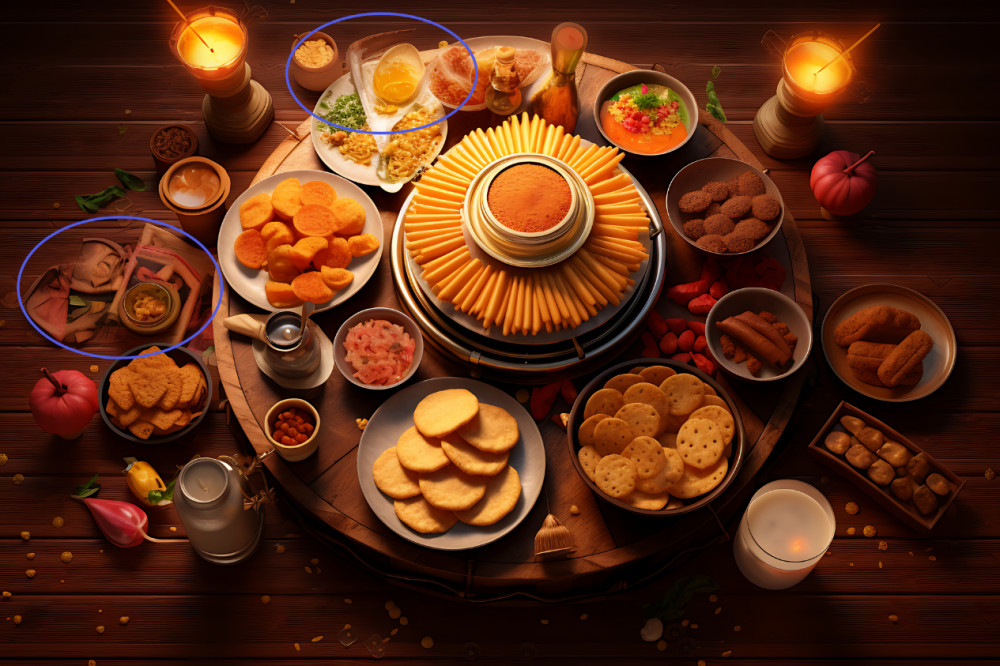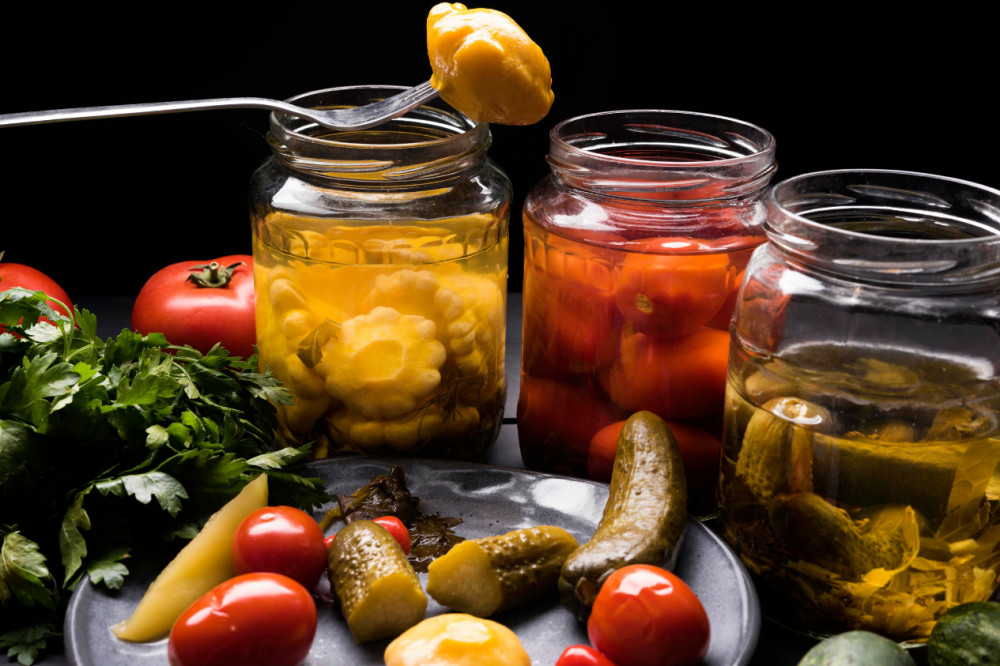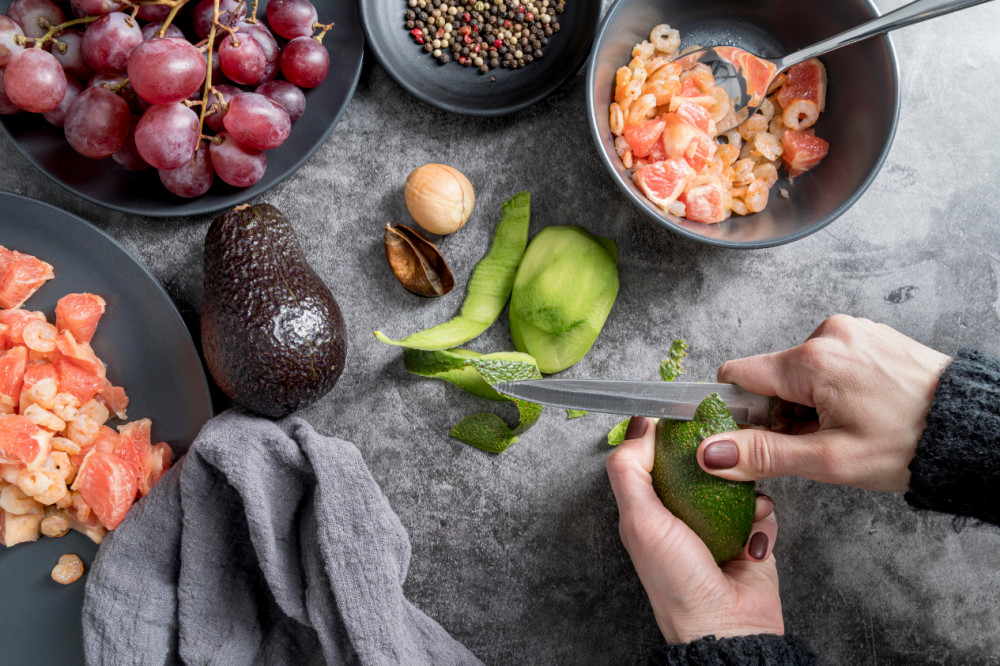
Are Chickpeas Assuming the Stature of Cauliflower?
Are Chickpeas Assuming the Stature of Cauliflower?
The versatility of chickpeas - ubiquitous legumes – is turning them into the new cauliflower
These days chickpeas, also known as garbanzo beans, are omnipresent … be it on the menu of restaurants or households, grocery store aisles or packaged foods. The best part about these little legumes is their versatility as they can be roasted; eaten on their own; made into hummus; or added to countless dishes, including soups, stir-fries and salads
Their fast growing popularity elevates chickpeas to the cauliflower-level status, where they can be turned into rice, pasta and pizza crusts. And their nutty taste and grainy texture pairs well with several other foods and ingredients.
Foodism through this blog brings you a peak into the benefits of these legumes alongside showcasing a quick recipe of chickpeas … ‘the new cauliflower’
BENEFITS OF CHICKPEAS
Replete With Nutrients
A half-cup serving of chickpeas comprises of 60 grams of carbohydrate, 20 grams of protein and 6 grams of fat. Replete with protein, iron, folate, fibre and phosphorus; moderate consumption of chickpeas helps stall diabetes, heart disease and obesity; alongside improving your micro-biome.
Helps Control Appetite
The protein and fibre in chickpeas work synergistically to slow digestion, which helps promote fullness. Additionally, protein may increase levels of appetite-reducing hormones in the body; in fact, the filling effects of the protein and fibre in chickpeas may automatically lower your calorie intake throughout the day and at meals
Packed With Plant-Based Protein
Chickpeas are an excellent source of protein, which has a variety of health benefits, ranging from weight management to bone health. Perhaps that’s why they are a great choice for vegan individuals.
Assists Weight Management
Chickpeas have several properties that may help you control your weight – primarily they have a relatively low calorie density; secondly as mentioned above the protein and fibre in chickpeas may promote weight management due to their appetite-lowering effects and potential to help reduce calorie intake at meals
Supports Blood Sugar Control
Chickpeas purportedly help manage your blood sugar levels owing to their comparatively low glycaemic index (GI) and rich fibre and protein content
Facilitates Digestion
The fibre in chickpeas is mostly soluble i.e. it blends with water and forms a gel-like substance in the digestive tract; this soluble fibre elevates the number of healthy bacteria in your gut and restrains the overgrowth of unhealthy bacteria; besides facilitating efficient flow of waste through your digestive tract. This translates into reduction of irritable bowel syndrome and colon cancer
Provides Protection Against Chronic Diseases
Heart Disease
Chickpeas are a rich source of magnesium and potassium, which boost heart health as they stall high blood pressure, which is a major risk factor for heart disease. Moreover the soluble fibre in chickpeas has been shown to help reduce triglyceride and “bad” LDL cholesterol levels, which may increase heart disease risk when elevated
Cancer
Chickpeas boost the body’s production of butyrate, a fatty acid that has potential to reduce inflammation in colon cells, possibly decreasing the risk of colon cancer. Additionally chickpeas are a source of saponins, which are plant compounds that may help prevent the development of certain cancers
Diabetes
Chickpeas have a few properties known to support blood sugar control, and thus may help prevent and manage diabetes. Basically, the fibre and protein in chickpeas help prevent your blood sugar levels from rising too quickly after eating, which is an important factor in diabetes management; add to this the low glycaemic index (GI) which ensures that chickpeas do not spike blood sugar
Cost-effective and Easy to Add to Your Diet
Chickpeas are quite affordable, convenient, easily available and that too in versatile forms.
Moreover chickpeas can be used in a variety of dishes – they can be added to salads, soups or sandwiches; they are an innate ingredient of hummus (a dip prepared with mashed chickpeas, garlic, lemon juice, olive oil, salt and tahini); they can be roasted and consumed as a crunchy snack; they can be incorporated into veggie burgers or tacos.
Due to their protein content, they double up as an excellent substitute for meat for vegetarians.
RECIPE
Foodism brings for you a quick-to-make and appetising chickpea recipe …
Chickpea Soup
Ingredients -
Celery (Finely Chopped) – Half Cup
Cheddar Cheese (Grated) – 30 to 40 Grams
Chickpea Stock – One Litre
Chives (Finely Chopped) – Half Cup
Garlic Cloves (Chopped) – Two to Three
Gram Chickpeas (Skinned) – 150 Grams
Green Bell Pepper (Finely Chopped) – One-fourth Cup
Leeks (Finely Chopped) – Half Cup
Olive Oil – One Tablespoon
Onion (Medium) - One
Red Bell Pepper (Finely Chopped) – One-fourth Cup
Red Chilli Flakes – One Teaspoon
Rosemary Leaves – Few
Sage – Few Sprigs
Thyme – Few Sprigs
Yellow Bell Pepper (Finely Chopped) – One-fourth Cup
Yellow Squash (Finely Chopped) – One-fourth Cup
Zucchini (Finely Chopped) – One-fourth Cup
Method –
- Place a pan on the flame
- Add the leeks, celery, onions, garlic, chives, rosemary, thyme and sage
- Then add the chopped zucchini, squash, and bell peppers
- Add a dash of the red chilli flakes, chickpeas and the chickpea stock
- Stir and bring to a boil
- After the soup boils let it simmer for a few minutes and then blitz it
- While the soup is simmering you can sauté the leftover chickpeas, bell peppers, zucchini and yellow squash in olive oil as topping
- Garnish the soup with the grated cheddar cheese
Go ahead and beat the winter blues with this piping hot and yummilicious chickpea soup!
Chickpeas are considered equivalent to cauliflower because alike the latter they too pack in multiple health benefits besides being versatile and hence are a common sight on the food menu of a range of eateries be it a roadside food outlet or a high-end restaurant.
On a conclusive note chickpeas are an inexpensive pantry staple that can be purchased dried or canned and used in a variety of dishes. A useful tip while buying canned beans would be to select the “no-salt added” version; alternatively it’s best to drain and rinse the beans, which reduce the sodium content by 40 per cent.
Related Blogs

Flavours of Mizoram: The Harvest Table You Need to Try
26 Views

Fusion Thanksgiving: India-Inspired Global Feast
75 Views

Food Offerings and Festive Plates of Kartik Purnima
175 Views

The Science of Ferment: Easy Homemade Fermented Foods
129 Views

Zero-Waste Cooking: 7 Dishes That Use Every Bit
131 Views